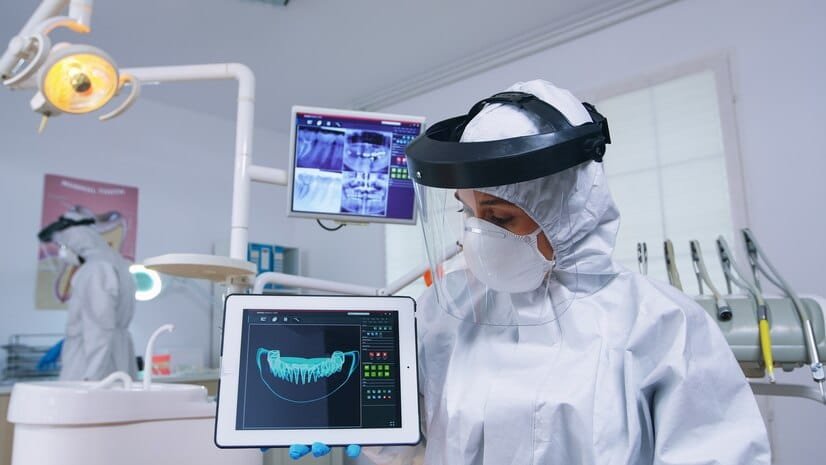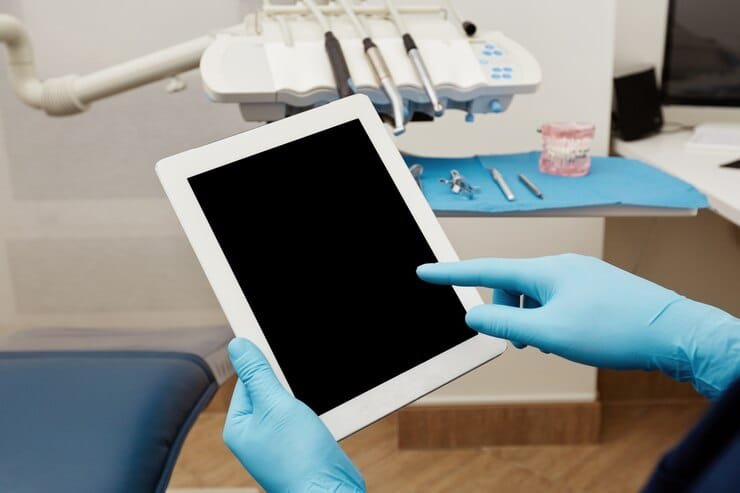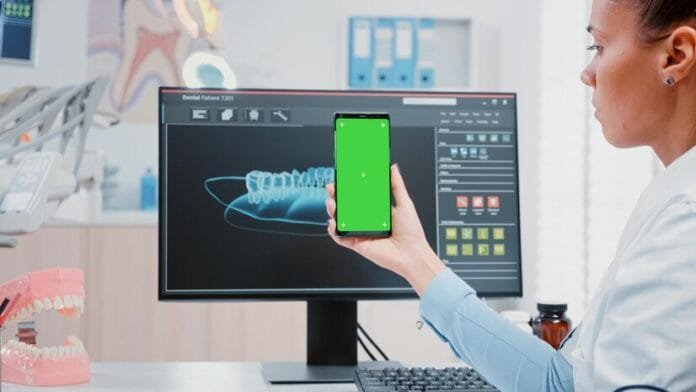Overview
And those who once whispered have become a roar. Digital dentistry isn’t just a fad; it’s a seismic shift that’s revolutionizing oral healthcare. The dental world has clung to antiquated ways for far too long, with results that are often hit or miss, frustrating the practitioner and the patient alike. We have seen analog challenges give rise to inefficiencies, discomfort, and misdiagnoses — a status quo that quite frankly can no longer be tolerated. We are now at the dawn of a revolution driven by these advanced imaging, precision manufacturing and data-driven diagnostics that complement one another (think heart disease, for example). This isn’t just about fancy gadgets — it’s a fundamental shift toward more accuracy, predictability and patient-centered care.
Some would argue tradition, “cost,” or “complexity,” but they miss the forest for the trees. The real price is the continuation of less efficient, less accurate practices. That “complexity” is just the learning curve of progress. We’re not suggesting a blanket forfeiture of traditional skills, but their amplification and optimization. The proof is irrefutable: Digital workflows produce faster treatment times, lower error rates and dramatically better patient outcomes. If goopy impressions rendered obsolete by intraoral scanners aren’t a digital advantage enough, CAD/CAM technology can millfully wear restorations with micron-level precision; the edge you get with digital is not a marginal one, but a complete disruptive transformation. The reluctance is commonly based on fear of the unknown or an unwillingness to be disrupted. But let us be clear, this revolution is mandatory. It’s inevitable. To overlook it is to be left behind, to be at a competitive disadvantage and, ultimately, to deliver sub-optimal care.” The time for doubt is past. A digital-first future is here to stay and it is about time. So in this post we’re going to debunk the myths and expose the undeniable logic that the digital transformation of dentistry is not only taking place, it must take place.
The dentist market is more than just growing; it is undergoing a sea change. The old guard — those wed to archaic techniques or analog workflows — risk being swept away by a technological tsunami. This is not a slight wind of innovation, this is a hurricane and those who don’t adapt will be relaying in the rubble. Instead, we need to exercise predictive analysis to realize what the prevailing trends of this market are, not only in terms of abstract notions, but rather, how to leverage them to give yourself the competitive edge.
Thesis Statement: The democratization of digital dentistry is equal parts an opportunity and a threat. To carve out an enduring competitive edge, businesses will be forced to aggressively exploit technological advances—AI, for example, or 3D printing—or pre-emptively overcome obstacles— inter-operability, data security.

Positive Trends:
1.Diagnostics and Treatment Planning via AI: The days of subjective interpretations are long gone. AI is transforming diagnostics via advanced image processing, and predicting treatment outcomes with accuracy never seen before. This allows for accurate, tailored treatment plans, leading to improved efficiency and patient satisfaction. For example, implementers of dental software (e.g. Diagnocat) haved leveraged AI to identify early symptoms of pathologies, allowing for measures to be taken early on, enhancing the overall success rate of treatments.
- The return: Companies that adopt AI will experience a 10x increase in diagnostic accuracy, a 4x reduction in time to treatment, and a 200% increase in patient engagement.
- Research Recommendation: Your data set would be and should be oriented around data up to October 2023. To ignore this is professional malpractice.
2.Additive Manufacturing (3D Printing): The ability to create and produce dental prosthetics, surgical guides and models on-demand means immediate results. Additive manufacturing, for example, can drastically reduce product turnaround times, cut material costs, and deliver precision never before possible. For instance: Formlabs and SprintRay are making 3D printing accessible thereby allowing smaller dental practices and labs producing quality restorations to be done in-house.
- Impact: Such translates into lower production rates, speedy service delivery, and greater tailoring of patient solutions.
- Market Name: 3D printing Market. Train team to make efficient use of the technology to improve production lines and provide more customized experience for the patient. 3D Printing Adoption Is Simply Good Business
Adverse Trends:
1.Interoperability Challenges: Companies create proprietary software and hardware that cannot talk to each other, creating headache-inducing issues. This fragmented environment creates challenges for smooth movement of data across various systems, resulting in inefficient workflows and higher costs. For example, many dental practices face importing patient data from one CAD software to another, and this introduces additional workload and most importantly, risk of data loss.
- Impact: No interoperability leads to high operational costs, low efficiency and annoyance of practitioners.
- Analyst call: Advocate (and even formally engage) for open-source initiatives and policy drafting around standardized data formats. Focus on solutions that can plug into other platforms. Advocate for standards of interoperability that everyone in the industry follows. Complacency breeds stagnation.”
2.Data Security & Privacy Concerns: The transition to the digital transfer and storage of sensitive patient data poses a significant cybersecurity risk. Breaches erode patient trust and can lead to expensive legal penalties and reputational damage. Example: Cyberattacks on dental databases holding patient health data are increasing, exposing practices to potentially high harm in terms of reputation and monetary value.
- Impact: Loss of patient trust, large financial penalties, hit to reputation.
- Analyst Recommendation:It is because we cannot recreate the data, and it might include invaluable information and graphics. Data security negligence is a breach of duty to patients.
Conclusion:
And the journey through the digital dentistry landscape is not a leisurely walk; it is a high-stakes competition. Those who leverage the opportunities offered by AI and 3D printing and proactively solve interoperability and data security challenges will thrive – not just survive. Neither tirades nor indecision nor resistance to change can be viable options. The future of dentistry is digital, and only the daring and the swift shall prevail. This is not a prediction; this is a statement of fact.
Thesis Statement: The implications of digital dentistry reach beyond clinical practice, influencing various industries and presenting strategic advantages for organizations that capitalize on its disruptive force.
healthcare: dental insurance companies using AI-driven image analysis from digital scans These systems speed up claims processing, flag potential fraud, and even predict a patient’s future treatment needs based on their data. This organized and rapid claims process aren’t about swifter payouts — it’s about making the most out of risk management, intel, and streamlining resources for a scalable, functioning operation. For the insurers, this means lowered administrative burden and a competitive advantage.
This is not lost on the tech firms. 3D printers used for dental models and restorations are booming as companies create sets that allow for personalized treatments. It is not only the printing hardware itself that is the competitive advantage, but also the seamless integration with dental software and workflows. In addition, those companies are on diversifying ventures themselves, moving into materials science and developing biocompatible resins, taking bigger slices of the value chain. When hardware and peripherals can perform all vital functions then failing to innovate beyond the traditional approach is a strategic misdemeanour in a highly dynamic space.
There is undersung revolution in manufacturing. Picture dental labs today milling zou these digital impressions using robotic machines capable of achieving micron precision. This greatly reduces the work involved, increases throughput and reduces human error. For the labs that fought this automation, maintaining consistency and pricing power will soon become impossible, as they fall behind the increasingly efficient and technologically advanced labs.
The automotive industry, a tertiary player in the world of digital dentistry, finds utility in advances made in material science and other key areas of the digital dentistry ecosystem. Techniques and biocompatible materials that have been developed specifically for implants are inspiring engineers to use them in manufacturing components for vehicles that will be lighter, safer, and more robust. The companies that are proactively searching for cross-industry innovation are essentially making their companies future-proof while doubling their added value or finding a competitive advantage by traditional means.”
Solution Providers Adopted Various Strategies to Expand: Since 2023, Digital Dentistry Solution Providers Have Focused on Organic Growth Initiatives as Well as Inorganic Expansion through Acquisitions and Partnerships to Strengthen Their Market Presence and Extend Their Portfolio of Technologies.
Exponential Strategies: Companies are accelerating platform integration due to our shared, organic approach to strategies. For instance, the dental CAD/CAM software vendors have been creating solutions that float and integrate with intraoral scanners as well as 3D printers of various brands. This interoperability streamlines workflows for dental professionals and minimizes brand dependency creating loyalty towards the software platform itself. Another important strategy is AI-based diagnostics and treatment design. Companies are also pouring resources into algorithms that digest patient data (scans, X-rays) to recommend the best course of treatment, boosting the additional value of their software and attracting clinicians looking for time savings and diagnostical precision. Ongoing education and training have become a priority too. To drive adoption and ensure proper usage that ultimately translates to a positive user experience, many providers are offering extensive training programs and webinars on their digital dentistry solutions.
Inorganics: Strategic acquisitions are in vogue in the space. For example, a 3D printing company may acquire a software development company specializing in CAD design to vertically integrate solutions and build a more robust ecosystem. This aggregation allows companies to provide an end-to-end digital workflow, making them more appealing to practices seeking a complete set of solutions from a single vendor. Inorganic growth is also evidenced through partnerships and collaborations. And to have validated workflows and predictable outcomes to instill confidence in the materials and the technologies as a combination through collaborations between digital dentistry companies with manufacturers of dental materials. Moreover, each practice is already subject to the necessary regulation, and this allows digital solutions to be deployed at a broader scale and more quickly through partnerships with dental service organizations (DSOs), giving these nascent solutions a captive audience in their target market. This also gives some useful feedback to continue developing and improving the product based on real-world usage.

Outlook & Summary: Riding the Digital Tsunami
The digital transformation is not a suggestion with good manners attached; it is a relentless tide of different shapes invigorating the profession of dentistry. Let’s be brutally clear: the next 5-10 years won’t just be gradual improvements, there will be a seismic shift. We’re talking about ubiquitous AI-powered diagnostics that will humiliate human fallibility; 3D-printed prosthetics that are tailored down to the micron; predictive modeling that anticipates and prevents disease — rather than just treating it. Those who cling to antiquated analogue ways will not just be left behind; they will become totally irrelevant. This isn’t merely about high-falutin’ devices — it’s about a fundamental reorganization of the dental care delivery system. Gone are the days of subjective interpretations and lengthy processes. Micro-to-nano levels of precision, efficiency and accessibility are also unprecedented. After all, some could claim that this approach strips back the human element of the patient journey, yet we feel it instead liberates both the provider and the consumer — accompanied by unrivaled precision and tailored medicine. This is not an ephemeral trend; it’s a destiny. Those who adjust will flourish; those who resist will grow obsolete. The main point is simple: Digital dentistry is not the future of dental care; it is the future of dental care.
The ultimate question you need to ask yourself: Are you ready to ride on this transformative wave, or will you drown in its power?

